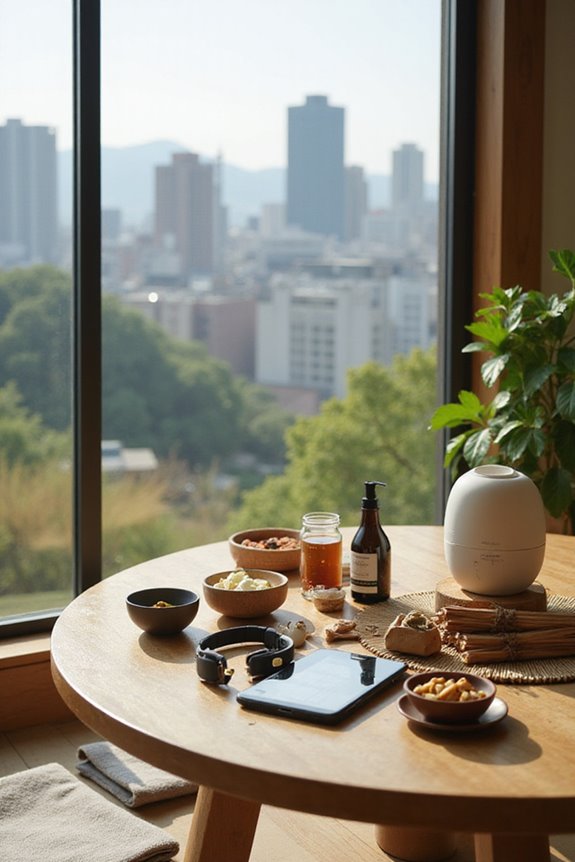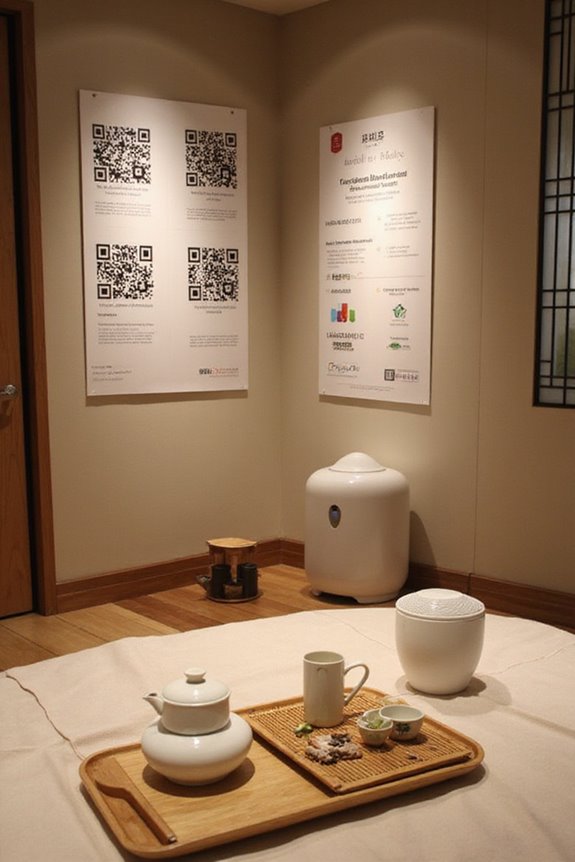Korean health and wellness trends are evolving, shaped by market growth, demographic changes, and technological advancements. The health and wellness market is predicted to reach USD 450.5 billion by 2033, with heightened demand for functional foods and beverages promoting heart health and immune function. As the population ages, there’s an increased focus on elderly care and mental health support. Government regulations enhance trust in product safety. To understand more about these significant trends, we’ll explore various aspects in detail.
Key Takeaways
- The aging population in South Korea is driving demand for specialized elderly care services and mental health support for caregivers.
- There is a notable growth in functional foods and beverages, focusing on natural ingredients and targeting heart health and immune function.
- Preventive healthcare awareness is rising, supported by government regulations that enhance consumer trust in health product efficacy and safety.
- Technology integration, including telemedicine and wearable devices, is improving healthcare access and monitoring, despite regulatory challenges.
- The health and wellness market in South Korea is expanding rapidly, projected to grow significantly in the coming years.
Growth of the Health and Wellness Market
As we observe the growth of the health and wellness market in South Korea, it becomes clear that several dynamic factors are driving this expansion. The market is projected to increase from USD 220.5 billion in 2023 to USD 450.5 billion by 2033, reflecting an impressive compound annual growth rate (CAGR) of 7.41%. Product innovation plays an essential role, with companies developing targeted health products for specific demographic segments. This innovation aligns with rising awareness of preventive healthcare, greatly contributing to overall market expansion. In addition, supportive government regulations enhance consumer trust, ensuring that products meet strict safety and efficacy standards. Together, these elements create an environment ripe for growth and advancement in South Korea’s health and wellness sector.
Impact of Demographic Changes on Wellness Trends

Demographic changes in South Korea, particularly the aging population and declining birth rates, are significantly reshaping wellness trends across the nation. As the demand for elderly care services increases, we’re witnessing a surge in specialized programs aimed at improving geriatric care. This shift places greater emphasis on mental health support, as younger family members often face pressure to care for older relatives, potentially exacerbating stress and mental health issues. In addition, a shrinking workforce results in fewer healthcare professionals, which may challenge the availability of these essential services. In response, we’re likely to see innovations in technology aimed at improving care for the elderly, alongside community-based programs designed to support family dynamics and enhance overall well-being.
Rise of Functional Foods and Beverages

The changing demographics in South Korea have certainly influenced wellness trends, particularly in the area of functional foods and beverages. We’ve seen a significant market growth in health functional foods, with a compound annual growth rate of 8.5% from 2019 to 2023, reaching sales of 3,768 billion KRW. Functional food innovations are increasingly featuring ingredients like prebiotics and probiotics, catering to our growing health awareness. Likewise, the demand for functional beverages has surged, as they incorporate ingredients supporting heart health and immune function. Consumers are favoring options with natural and clean label ingredients, reflecting a shift toward healthier lifestyles. This trend indicates a promising future for functional foods, as they continue to evolve in response to our health needs.
Role of Government Regulations in Health and Wellness

Government regulations play an essential role in shaping the landscape of health and wellness in South Korea, particularly as we navigate advancements in digital health. The Digital Medical Products Act (DMPA), effective January 2025, establishes strict digital medical regulations, requiring manufacturers to obtain approval from the Ministry of Food and Drug Safety. This guarantees that digital medical devices meet safety and efficacy standards. Alongside this, the government’s preventive health initiatives, such as the Health Life Practice program, incentivize healthy habits by rewarding citizens for measurable improvements. These initiatives aim to reduce future healthcare costs linked to chronic diseases, guaranteeing a healthier population while addressing economic pressures from an aging demographic. Together, these regulations support both public health and innovation in healthcare.
Integration of Technology in Health Solutions

As the framework of health and wellness evolves, we can observe a significant integration of technology into health solutions across South Korea. One notable trend is telemedicine adoption, which has greatly improved healthcare accessibility, allowing patients to receive consultations without physically visiting a clinic. The growth of wearable technology has also transformed health monitoring; these devices collect valuable health data, enabling personalized insights and preventive care. In addition, the digital health market is expected to expand rapidly, driven by innovations such as electronic health records (EHRs) and advancements in artificial intelligence. These technologies are reshaping how healthcare providers deliver services, despite challenges such as regulatory hurdles and data-sharing inconsistencies. Overall, the integration of technology enhances the efficiency and effectiveness of health solutions.
Future Trends in Korean Health and Wellness
Emerging trends in the Korean health and wellness landscape reveal a dynamic shift towards holistic practices that integrate modern science with traditional approaches. We’re witnessing a pronounced emphasis on mindful consumption, as consumers seek products that support overall health rather than merely addressing specific ailments. This shift incorporates retro wellness, where analog experiences and hobbies are embraced to foster mental well-being, promoting slower, mindfulness-oriented lifestyles.
Additionally, a focus on gut microbiome health is reshaping dietary choices, leading to greater interest in functional foods rich in probiotics. The demand for sustainable wellness products also reflects increased consumer consciousness regarding environmental impact, driving brands to adopt eco-friendly practices. Collectively, these trends represent an all-encompassing approach to health and wellness in Korea.
Frequently Asked Questions
What Are the Most Popular Health Supplements in South Korea?
When we look at popular health supplements in South Korea, we can’t overlook Korean ginseng and fermented foods like probiotics. These choices effectively cater to our growing interest in immunity and overall wellness.
How Does Traditional Korean Medicine Influence Current Wellness Trends?
Did you know that over 70% of Koreans use herbal remedies or acupuncture practices for wellness? We’re witnessing a revival of traditional Korean medicine, shaping modern health trends with its holistic, balanced approach to well-being.
What Role Does Celebrity Endorsement Play in Wellness Product Popularity?
Celebrity influence plays a huge role in wellness product popularity, don’t you think? It fosters brand loyalty by aligning products with aspirational figures, making us more inclined to trust and invest in their health routines.
How Are Wellness Trends Impacting Dietary Habits in South Korea?
Isn’t it amusing how we’re all chasing plant-based diets and mindful eating, yet still admire the flash of fast food? Together, we’re reshaping our choices, embracing nutritious meals, and redefining our dietary habits with intention.
What Is the Impact of Social Media on Health and Wellness Choices?
We’ve seen how social media shapes our wellness choices, for better or worse. It connects us to valuable health insights but can also fuel comparison and misinformation, making mindful navigation essential in today’s digital landscape.





